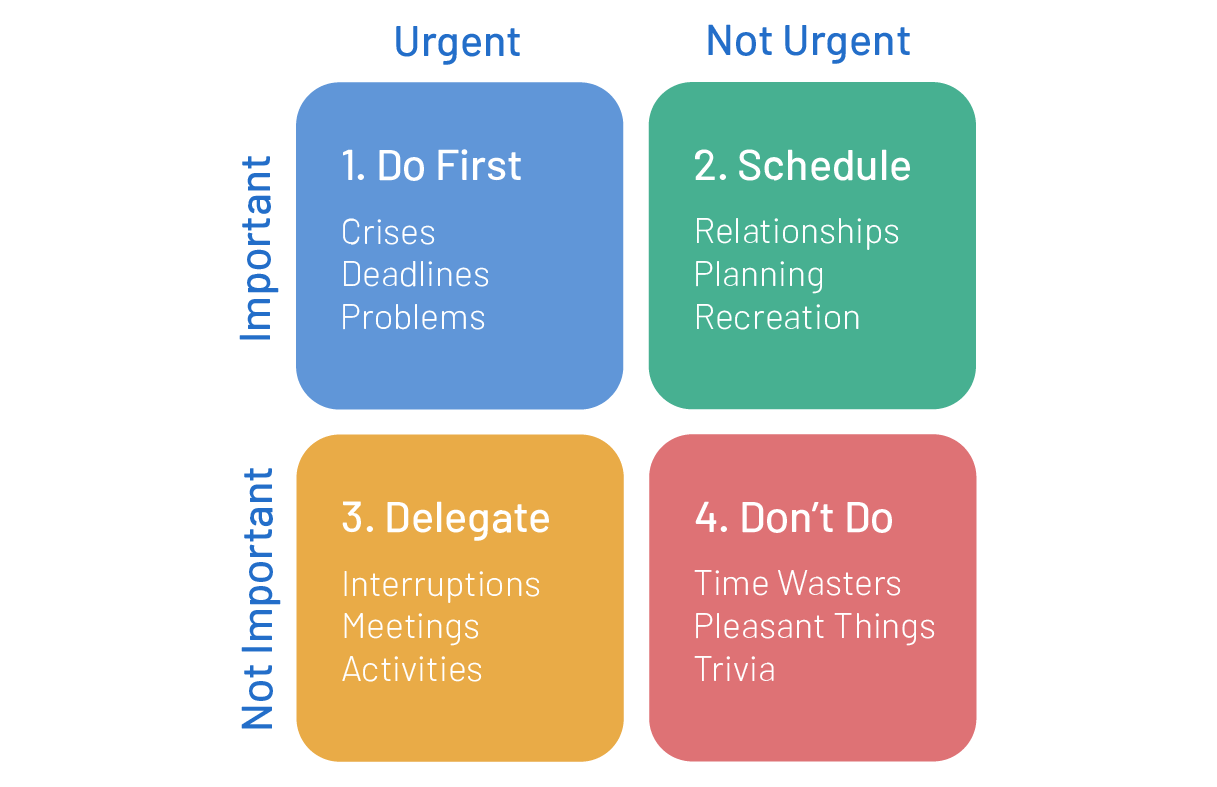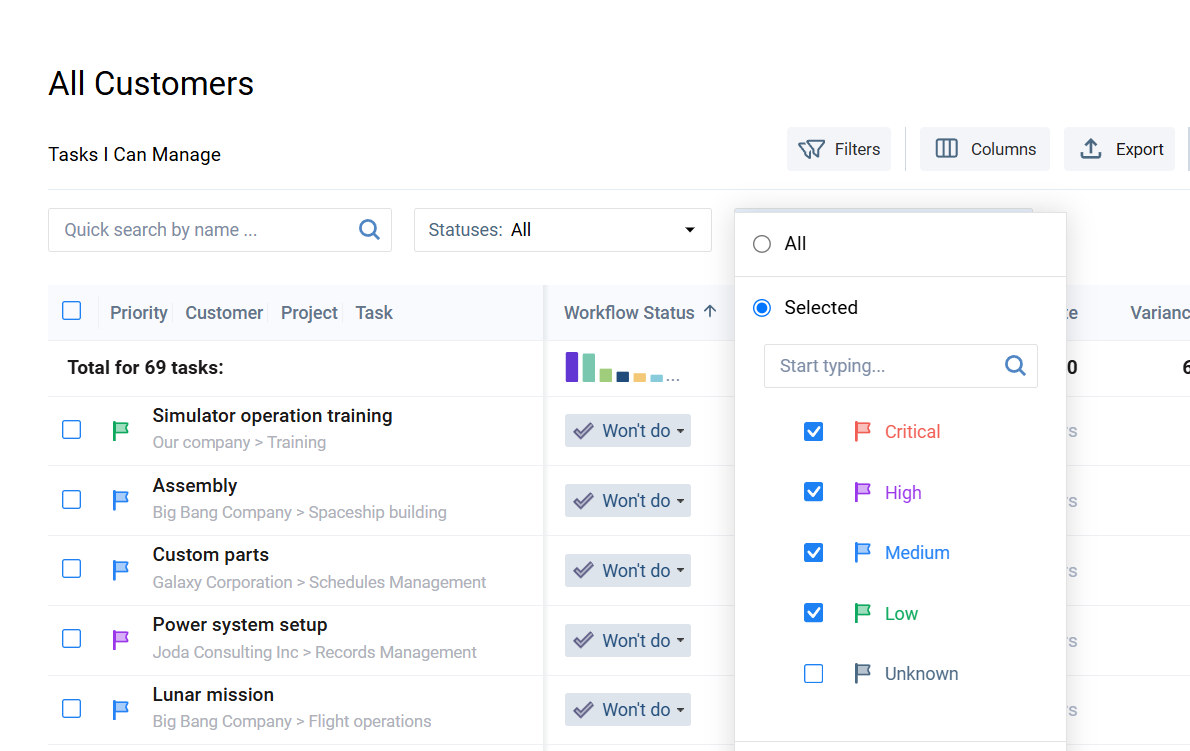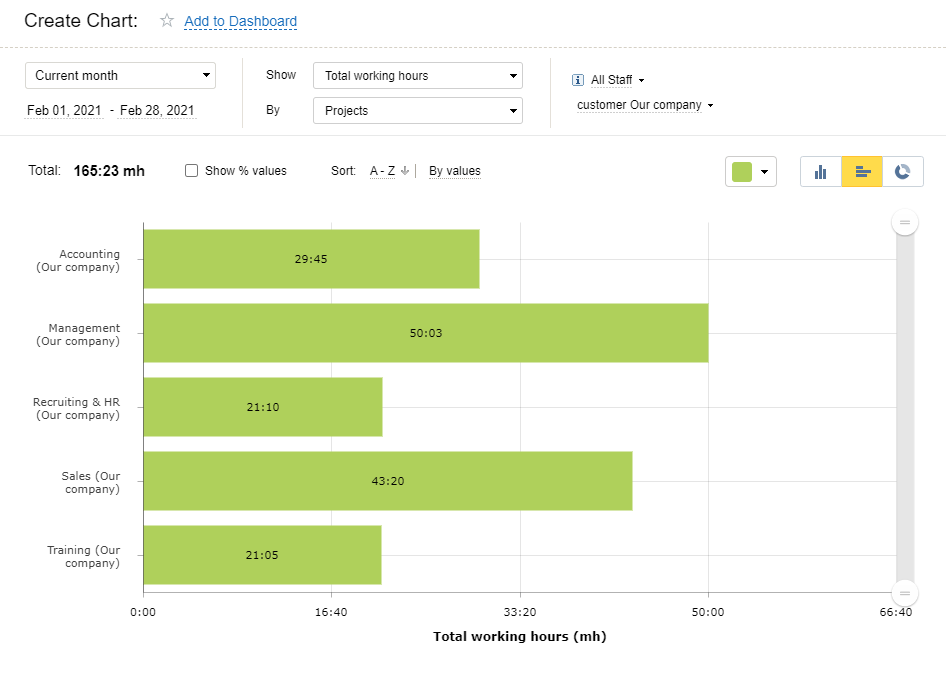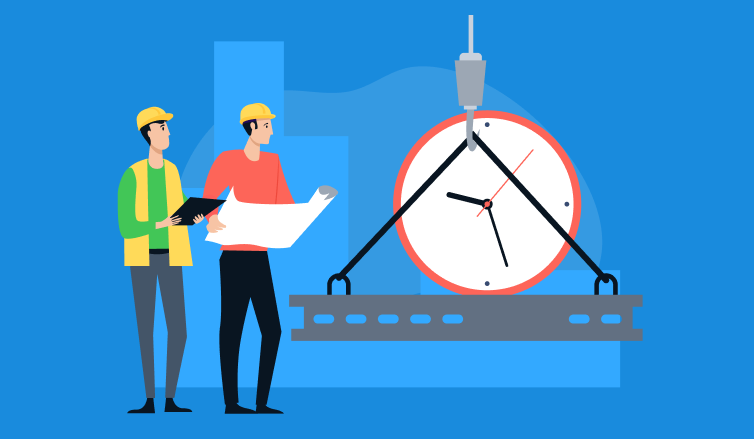
According to research, more than 40% of time is being spent on unimportant activities. Think of it in another way: nearly half of life goes down the drain.
Lousy, isn’t it?
Juggling multiple tasks, overwhelmed, stressed — we might still believe that we are working on important things when in reality they are not so. Such work leaves no room for big goals and bright ideas. Yet it is not our fault. As beautiful as it is, our brain often leads us the wrong way. Once we know how it works and apply a few useful tricks, our life will never be the same.
So, what do you need to do to dispose of your time well?
Steven Covey’s time management matrix offers a solution to that problem. Read on as we discuss what the time management matrix is and explain how it teaches us to prioritize tasks and stay focused on the truly important stuff.
But first, let’s explore the background of the issue a bit and see how our brains make it difficult for us to manage time effectively.
How Our Brain Behaves
Our behavior can be defined by two different zones in the brain: “thinking” and “reactive” brain. The reactive part is the oldest. It goes back to the times when ancient hunters had to escape the saber-toothed tiger. Nothing has changed until today (not counting the fact that tigers became extinct). The reactive brain triggers “fight-or-flight” mechanism and other automatic reactions that let us survive. It also occupies the larger part of our brain — which helps us understand why it is so powerful.
The thinking brain allows us to reflect and take decisions consciously. However, this rational part won’t work properly if we are threatened, stressed or gripped by emotions. It also takes more energy and time than the reactive brain. Literally, it requires effort to think. Attention, we are getting to the most interesting part of the story.
Looking to improve your time management skills? Download our guide to get detailed recommendations.
How Our Brain Deceives Us
When we are faced with urgent tasks, our reactive brain steps in. We rush doing them without much thought. The sense of accomplishment makes us feel extremely good. This can evolve to a real “urgency addiction.” What’s bad about this?
Urgent tasks are not necessarily important. We start doing things simply because they seem to be critical. We like feeling busy and energetic, and our brain supports this feeling by producing dopamine. When things calm down it turns out that we have wasted the whole day on trivial matters.
What Is the Covey’s Time Management Matrix?
To spend time on high-value activities, you should develop a more conscious approach to your commitments. Break the pattern and take control over your reactive brain. If you want to do what’s important instead of what’s urgent, the best tool at hand is Stephen Covey’s time management matrix.
According to Covey, each task can be sorted according to its urgency and importance. All in all, we have four categories of tasks. They are shown as quadrants on the figure below:

4 Quadrants of the Time Management Matrix
Quadrant 1: Do first!
This quadrant covers unforeseen events and pressing problems. To avoid serious consequences, we have to deal with them immediately. Although some of these issues are unexpected, we can reduce the number of them by proper planning. Sometimes it’s just enough to work on them proactively — before they have become urgent (see Q2).
There are more ways to track and save time than you think. Pass our quiz to learn more.
Quadrant 2: Schedule
As tasks in this quadrant are not urgent, we might put them off for ages. Yet this is the worst mistake we could make. Ideally, this is the quadrant where you should spend most of your time: working on strategic, high-impact tasks. They will bring more value to your business — but also help you grow personally and professionally.
Quadrant 3: Delegate
“What is urgent is seldom important and what is important is seldom urgent.” – Dwight D. Eisenhower
As we have discussed earlier, some tasks keep you constantly busy, but don’t move you forward. They just distract you from your key goals. And the third quadrant of the time management matrix deals with such minor, yet urgent tasks.
Although it’s impossible to avoid these issues entirely, you should try to reduce their number: for instance, by delegating them to someone else on your team. If it is impossible to delegate, consider doing smaller tasks in batches. Allocate an hour for answering incoming emails instead of replying instantly to each message. It won’t be the end of the world if you reply in a few hours.
Quadrant 4: Eliminate
These tasks are neither important nor urgent. Small amounts of trivial activities help us relax. Yet we tend to waste a lot of time in this quadrant, so be careful: you are losing the present moment. Cut activities from Q4 to a minimum.
5 Tips on How Manage Your Time Management Matrix
• Plan and prioritize your tasks
Make it a habit to focus on Q1 and Q2 tasks. In order to make that happen, always craft a detailed list of everything you need to do before setting off a project. Then, be sure arrange your tasks according to Stephen Covey’s time management matrix.
There are plenty of tools that can help you figure things out faster and with greater ease. You may use a simple digital or printable to-do list template or a more advanced software solution like actiTIME.
actiTIME has a robust work scope management feature that allows for designing a comprehensive list of everything you want to accomplish. To sort this list, you can assign each task a priority or use custom fields to filter them by any selected parameter.

Plus, actiTIME has a work status tracking system that is normally used for workload management and progress monitoring on the Kanban board. However, you may apply it to create such task statuses as “Important” and “Not important,” assign these to different items of the list and then sort your tasks by priority.
• Develop control over your emotions
This will help your brain work optimally and make rational decisions. A good idea will be to learn how to meditate. Keep calm and carry on, guys.
• Be mindful
When you are feeling stressed, stop and try to reflect instead of reacting immediately. This is a “Pause-Clarify-Decide” principle. Remember, your reactive brain doesn’t always do you good.
• Learn to say “no”
If you are buried in urgent tasks (Q1 and Q3), learn to reject them. Use Covey’s time management matrix to explain your position.
• Track your time and evaluate the results
By keeping an accurate log of all your past activities, it’s easy to stay in the know of whether you used your time productively or if something went wrong. Hence, be sure to utilize a time tracking solution to record your working hours either manually or automatically.
actiTIME supports both of these hour tracking options. Besides, it lets you analyze your time-efficiency and productivity in depth through comprehensive performance reports and beautiful charts.

Remember that the secret behind being productive doesn’t lie in squeezing dozens of tasks into your daily plan. Quite the opposite: focus on fewer things. Decide what is important and work on that. Use to-do lists and time management software to help yourself. Once you learn how to approach your tasks, you will get big things done.

















































